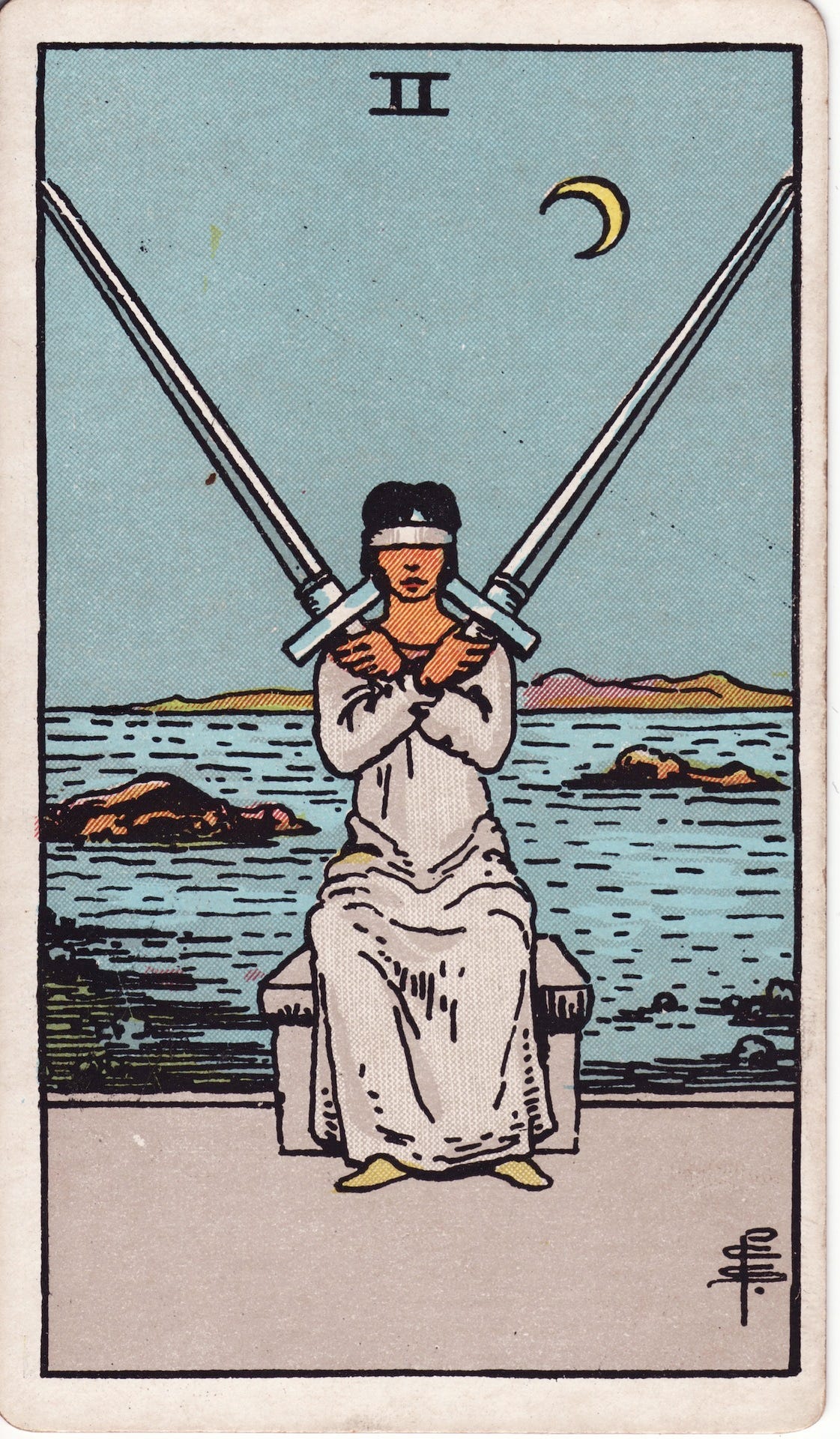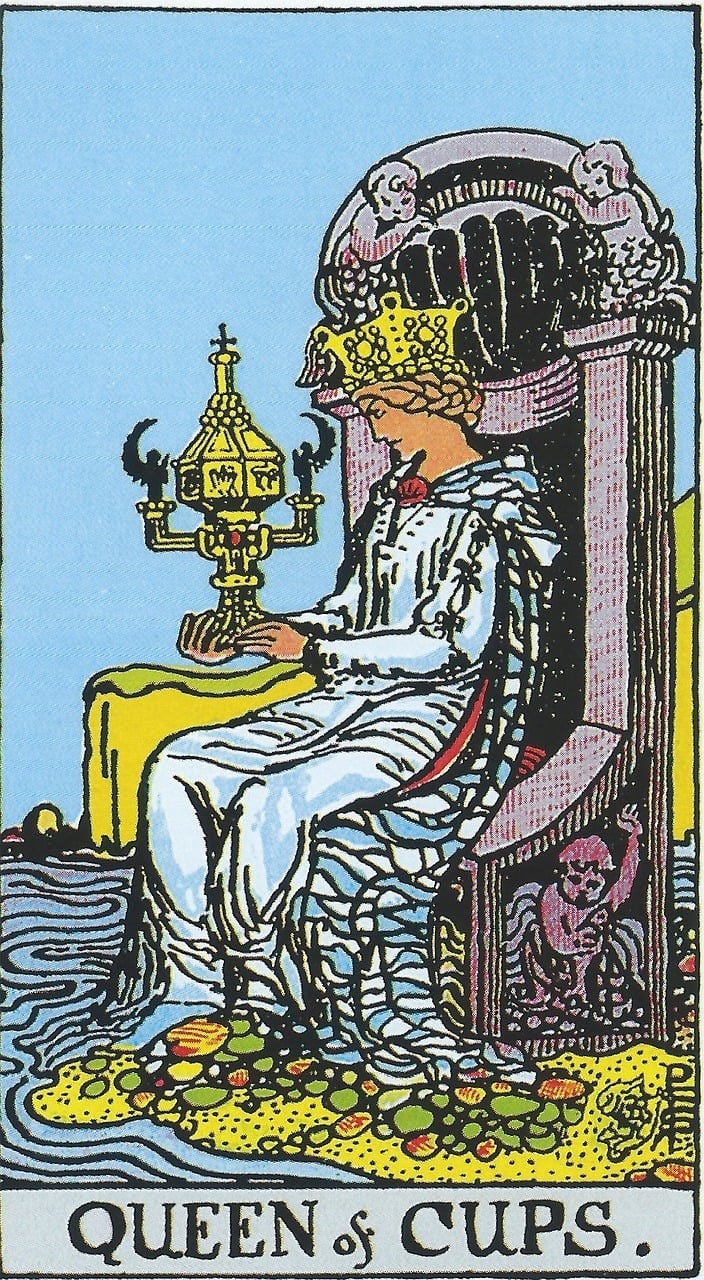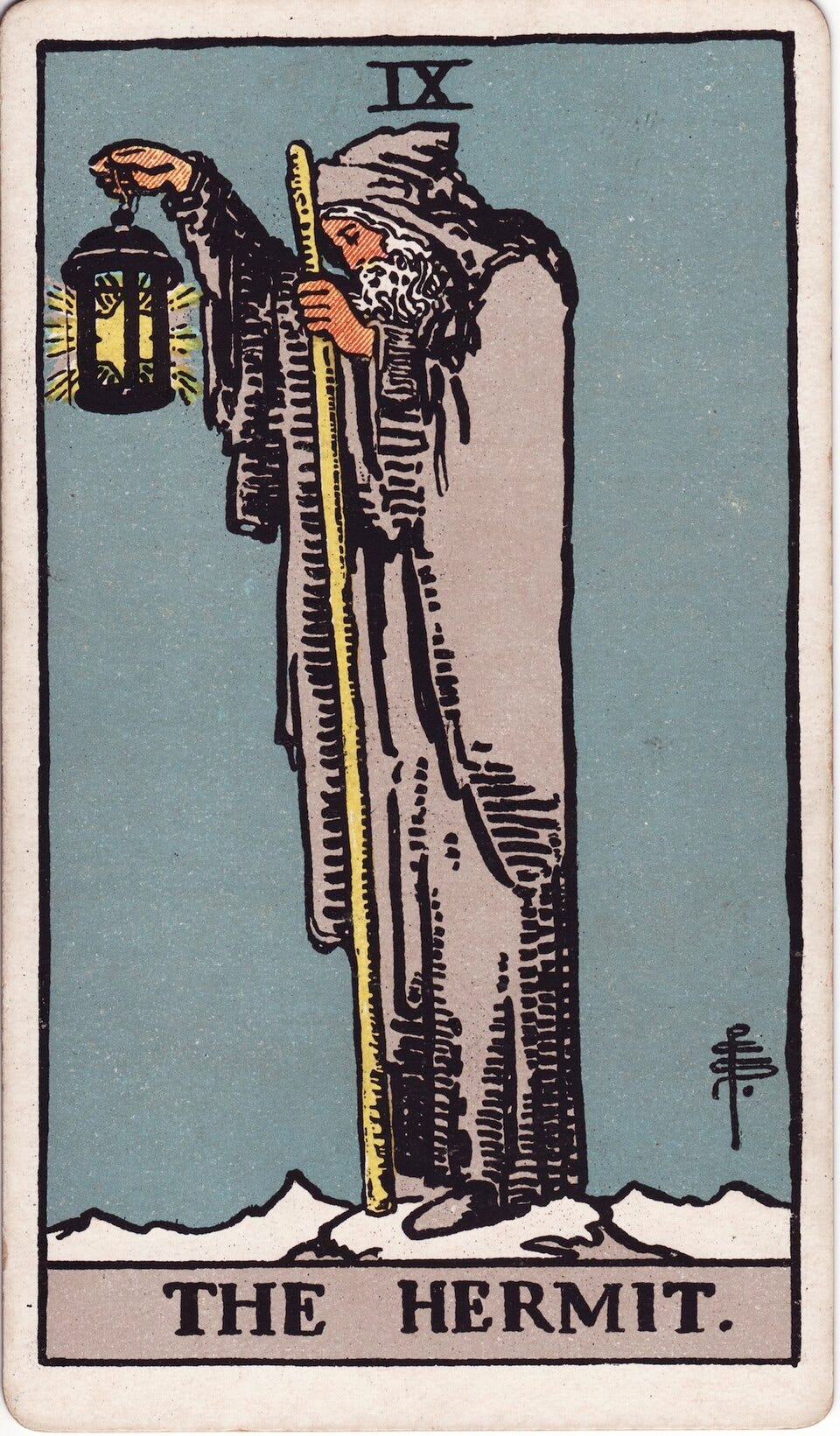Tuesday Tarot: a gentle guide for beginner readers
A weekly space to explore the art of intuitive reading perfect for curious readers and self-reflective souls
Whether you’re new to tarot, an experienced reader or simply looking for a sign to reconnect with your deck… then this space is for you.
Each week, I’ll share a spread I’ve pulled and include my visual and personal reflections and what I’ve uncovered from the reading. All while offering tips to help deepen your own practice should it resonate with you.
The goal is not prediction rather to interact with the subconscious mind through visual clues.
Which deck should you use?
For this series, I will be using the Rider-Waite deck. This a great deck for beginners because of its accessible imagery and narrative symbols. That said, I encourage you to use any deck that speaks to you. When I began, i was drawn to the vibrant imagery of the Thoth deck. But as I continued to study and learn, the Rider-Waite spoke to me more directly.
This deck has been my companion for over five years, and through it, I often sense (or perhaps embody) a distinctly Slavic cadence in the way it speaks, austere yet soulful, direct yet steeped in quiet intuition.
It was gifted to me by a beloved friend and spiritual guide, whom I met during my first weeks in Prague. He is a man of deep wisdom and quiet resilience, born in Russia and later finding freedom in the United States, where he could live openly and authentically as a gay man. His journey, one of both exile and homecoming, has always felt deeply woven into the energy of these cards.
One piece of guidance he shared with me has stayed close to my heart: he never allowed others to touch his deck, likening it to a sacred intimacy. He compared it to touching the most private parts of the self. In honor of him, I continue to hold that boundary with this particular deck. However, with other decks gifted by different friends, I am more fluid.
That is something I love about tarot.
There is no single “correct” way to work with tarot. It is a deeply intuitive and fluid practice that unfolds differently for each of us. Tarot is a sanctuary, a soft space where what feels right is often the truest guide. It is, in essence, a conversation with the soul, shaped entirely by the hands—and heart—that hold it.
I'm starting with a classic three-card pull: the first card represents the past, the second the present, and the third the future. This isn’t about predicting the future, but rather offering a reflective anchor to help guide your thoughts as you consider your next steps with more clarity and intention.
Tarot tip: If a card feels vague or unclear, you can always do an expansion pull. Simply focus on that card and draw another to help reveal deeper meaning.
Shuffling styles:
Here are three beginner-friendly ways to shuffle and pull cards that don’t rely on structured spreads (which can sometimes feel overwhelming):
Knock, Cut, Pull: Knock on the deck with your knuckle to clear the energy, cut it into three stacks, then pull cards from the top.
Fan & Feel: Shuffle thoroughly, spread the cards out, and choose those that visually or energetically call to you.
Jumpers: Shuffle freely and allow cards to fall or "jump" out. This is my personal favorite as I overthink less and let the deck guide me. I also believe decks hold a certain personality based on who gifted them and your ongoing relationship with them.
This week’s reading:
First card (the past): Two of Swords
Second pard (present): Queen of Cups Reversed
Third card (future): The Hermit
Deep dive into the Two of Swords:
This card returns to me like a mirror, showing not just a moment in time, but a pattern I’m learning to name. It appeared in my last spread where I was sitting with the discomfort after a hangout with two friends, the two swords, reflecting on my lack of certainty regarding how I’d shown up. In that spread, it was reversed. T
his was a clear reflection to my mind caught in loops, trying to unstick itself from the grip of old narratives.With space and reflection, I was able to recognize and identify a thought pattern toward the victim mindset. A mindset that no longer serves me. I’m learning that taking responsibility doesn’t mean blaming myself, but freeing myself.
People’s actions are reflections of themselves, not verdicts on my worth. I can release the urge to overanalyze and return to grounded clarity.
There is power in letting things be.
There is strength in allowing other people’s actions to speak for themselves.
Now, the card arrives upright. The blindfold remains, but no longer as a sign of helplessness—it signals a choice to detach.
There is a quiet pause before reaction. A moment to align. I still hold the swords, but now, I do so with greater care and awareness.
Deep dive into the Queen of Cups:
I let the images of the card guide me, at the time she appears to have a severe expression. I notice how her gaze is fixed on a gaudy golden object in her hands. She sits on a dark throne, alone on a small island of stone and sand, surrounded entirely by water. No trees. No animals. Just her, suspended in solitude and thought. A woman immersed in emotion, but disconnected from her surroundings.
In reversal, this card can speak to emotional overwhelm, suppression, or a misalignment between feeling and expression. It may signal a struggle with boundaries such as giving too much or pulling too far inward. In the context of the Two of Swords (past), it feels like an evolution: from blindfolded indecision and mental looping into a quieter, more internal reckoning of the heart. The mind sought clarity; now the heart seeks balance.
I see myself here. I’ve begun a long journey toward expressing myself without fear, learning to love without condition. I’m learning to accept others as they are and to be accepted in return, while walking the fragile line between people-pleasing and self-abandonment. I’m still discovering how to evaluate those around me through these new lenses which include a desire to do so honestly, respectfully and with integrity.
Like the Queen, I often retreat into isolation when I feel hurt. I tend to turn inward or to familiar places like my partner, my home, my cats as a way of severing from emotional pain. It’s a coping tool that can also deepen the distance between myself and others.
One question that surfaced for me: how do I honor the past versions of myself without shame, while still recognizing that some reactions no longer serve who I am becoming?
Tarot tip: Some tarot readers read reversals, others don’t. When I first started, I avoided them—it felt like too much to take on. But as I’ve grown more confident with the cards, I’ve begun to integrate reversals into my practice.
Deep dive into the Queen of Cups:
The Hermit appears as the final card, and I feel a deep connection to him. The quiet, and peace in solitude with with the bright light guiding his snowy path. I notice that he is outside connected to the natural world indicating that he hasn’t withdrawn completely. He has just chosen a quieter path.
That feels important.
This is not isolation for the sake of retreat, but solitude chosen with intention.
I can see the difference between the Hermit’s energy and the Queen of Cups reversed. It’s an invitation to accept the solitude of sanctuary without it becoming a fortress. Instead of using space as a protective harden wall to shield my sensitive soul. It can be a healing space.
The Hermit’s message feels clear: take time away, not as an escape from pain, but as an offering to myself.
Time to reconnect with the small, steady joys.
Open the window. Let the sunlight touch my skin as I curl up with a book.
Give my plants some extra care—or finally replant them like I’ve been meaning to.
Do the things I keep promising myself I’ll do tomorrow.
The Hermit reminds me: that tomorrow can be today.
Tarot tip: Major Arcana cards are numbered in sequence, representing key stages along the life path and spiritual journey.
Right now, turning inward feels dangerous. My inner critic is loud. It's been steering for a long time. I made promises as a child to hide myself out of protection. But now, like a snake, I am shedding that skin. The raw self underneath is sensitive, tender, and slowly learning what it means to be safe.
See you next Tuesday.
Bring your deck, your tea, and whatever you're feeling.
We'll keep reading, reflecting, and healing—together.





